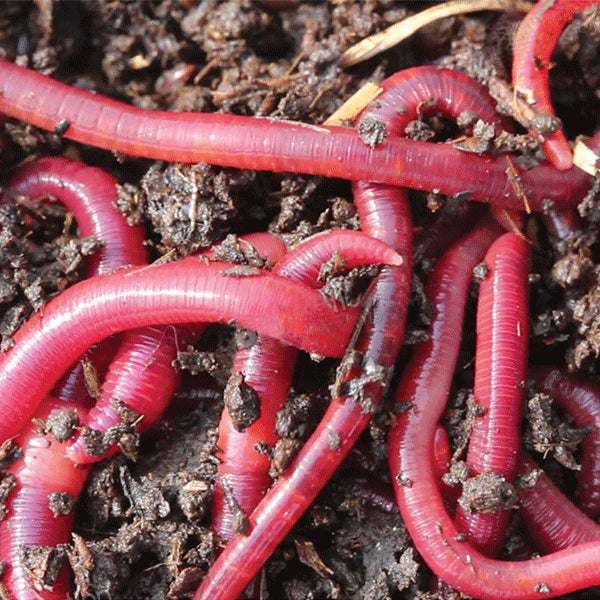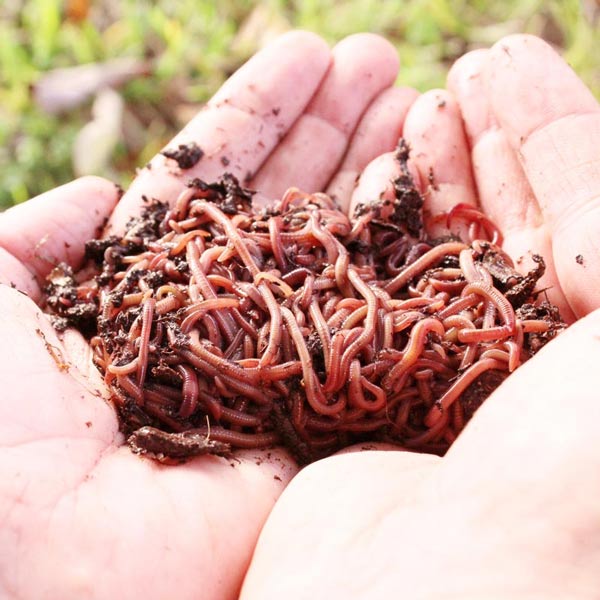The Function of Red Wigglers in Sustainable Horticulture
The assimilation of red wigglers into sustainable gardening techniques uses a compelling approach to boosting soil health and lowering organic waste. These microorganisms not just convert kitchen scraps right into nutrient-dense compost via vermicomposting however also freshen the soil, advertising ideal problems for plant growth. As they damage down complicated natural products, they proactively foster a flourishing microbial community necessary for lasting farming. The implications of using red wigglers expand beyond plain composting; their role in shaping an extra sustainable future warrants a much deeper expedition of their benefits and sensible applications.
Understanding Red Wigglers
Red wigglers, scientifically called Eisenia fetida, are a varieties of earthworm renowned for their role in sustainable horticulture and composting techniques - red wigglers. These worms grow in breaking down natural issue, making them specifically reliable in converting kitchen area scraps and backyard waste into nutrient-rich garden compost. Unlike traditional earthworms, red wigglers have a higher tolerance for varying wetness degrees and can grow in settings with plentiful natural product
The habitat preferences of red wigglers consist of damp, dark settings rich in natural material, such as garden compost containers or worm ranches. Their ecological function extends beyond composting; they are indispensable in freshening the dirt and assisting in vitamins and mineral cycling, which inevitably contributes to healthier yard communities. red wigglers. Recognizing the biology and habits of red wigglers is important for those looking for to implement efficient vermicomposting in lasting gardening
Benefits of Vermicomposting
Vermicomposting offers many benefits that improve lasting gardening practices and add to ecological wellness. One of the main advantages is the makeover of natural waste into nutrient-rich compost, which enhances dirt framework and fertility. The spreadings generated by red wigglers are packed with useful microbes and crucial nutrients, making them a superb natural plant food.
In addition, vermicomposting significantly decreases garbage dump waste. By diverting kitchen area scraps and lawn waste from garbage dumps, this technique not only minimizes methane exhausts-- a powerful greenhouse gas-- but also advertises a circular economy, where waste is repurposed as a source.
One more advantage is the enhancement of dirt aeration and water drainage (red wigglers). The burrowing task of red wigglers produces networks in the soil, permitting air and water to permeate even more conveniently, therefore promoting a healthier root system for plants
Furthermore, vermicomposting can be done on a tiny scale, making it obtainable for urban gardeners and those with minimal area. This method encourages environmental stewardship and recognition, as individuals become a lot more involved with their waste administration techniques. Eventually, vermicomposting stands for a lasting, effective, and green method to horticulture that profits both plants and the world.
Exactly How to Start Vermicomposting
Starting your very own vermicomposting system can be a fulfilling endeavor that improves your lasting gardening practices. To begin, pick an ideal container, such as a plastic bin or wood box, with good water drainage and air flow. The size will depend on the volume of kitchen scraps you generate; a bin of 10-14 gallons typically suffices for a home.
Following, prepare the bedding material. Shredded paper, cardboard, and coconut coir are excellent choices, providing a comfortable habitat for the red wigglers. Go for a bed linen depth of regarding 4-6 inches, which need to be damp but not soggy.
When the bedding is established, introduce your worms. Red wigglers (Eisenia fetida) are one of the most suitable for composting. Start with about one extra pound of worms for each 2-3 pounds of kitchen area scraps weekly.
Begin adding kitchen area waste, preventing meat, dairy, and oily foods, as these can draw in parasites and produce smells. Frequently monitor the bin's dampness degrees and temperature, guaranteeing it stays within the perfect variety for worm task. With these initial steps, you'll be well on your method to developing nutrient-rich compost for your garden.
Preserving a Healthy And Balanced Worm Bin
A thriving worm bin needs constant treatment and focus to maintain an optimal atmosphere for the red wigglers. Secret variables to keep track of consist of dampness degrees, temperature, and food supply. Maintaining a wetness level similar to a wrung-out sponge is vital; also much water can lead to anaerobic conditions, while as well little can dry out the worms.
Temperature level is additionally critical, as red wigglers thrive in a variety of 55 to 77 degrees Fahrenheit. Extreme temperatures can stress the worms, potentially resulting in mortality. Therefore, placing the container in a climate-controlled location you could look here or utilizing protecting products can help regulate temperature fluctuations.

Last but not least, oygenation is important. Regularly transforming the bedding and making use of a fork or shovel can stop compaction and promote air movement, making certain a healthy, thriving atmosphere for the red wigglers. By sticking to these methods, garden enthusiasts can preserve an effective worm bin that sustains sustainable horticulture efforts.
Influence on Soil Wellness
Enhancing dirt health and wellness via the use of red wigglers is an essential element of lasting horticulture. By consuming organic matter, red wigglers damage down intricate products into less complex compounds, a process understood as vermicomposting.


Verdict
In verdict, red wigglers considerably add to lasting gardening with their effective vermicomposting techniques. By promoting waste decrease and promoting a circular economic climate, red wigglers arise as crucial elements in eco-friendly horticulture initiatives, emphasizing their important duty in environmental sustainability.
Comments on “Versatile red wigglers: For backyard gardening”